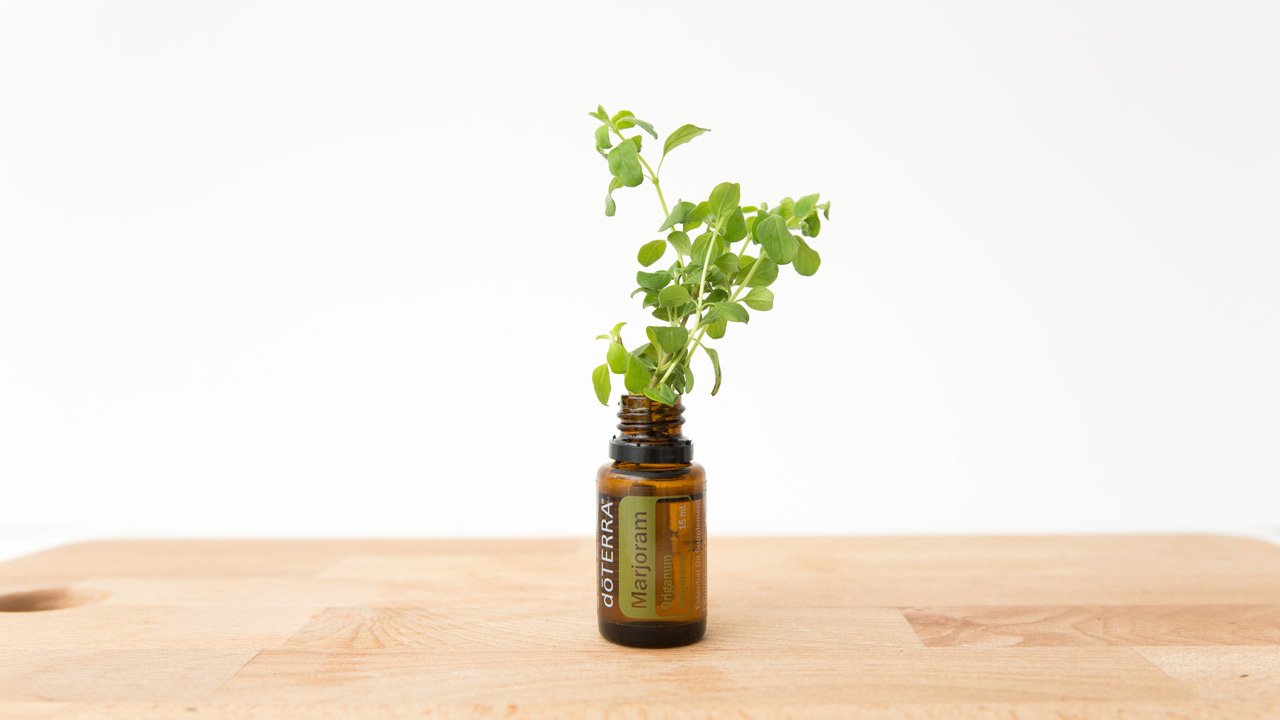Origin: a Latin derivative
meaning "Gift of the Earth."
All about Marjoram Oil

Believed to be native to the eastern Mediterranean, marjoram was used anciently in Greece. The Greeks and Romans saw marjoram as a symbol of happiness; they would make wreaths of marjoram for newlywed couples to ensure happiness and love. It is now grown in gardens all over the world today as a culinary herb. As a perennial plant, it can continue to grow year after year in warmer climates, but in colder climates where it won’t survive the freeze, it is used as an annual plant and dried for use during the winter.
Close Relatives
It is related to, and sometimes confused with, oregano. Both plants are from the mint family and the same genus of plants known as origanum. (In fact, another name for oregano is wild marjoram.) The difference between the two, however, is apparent as soon as you smell them. Open their bottles of essential oil and Oregano’s pungent scent is sharp, green, and camphoraceous, while Marjoram’s scent is more mild and sweet, with a minty and woody note.
Oregano and Marjoram oil’s scents and benefits are linked to their differing main chemical components. Oregano is made up of carvacrol and thymol, and possesses powerful antioxidants* thanks to the carvacrol. Marjoram is made up of terpinen-4-ol, sabinene hydrate, and y-terpinene. Following the trend set out by its softer, sweeter scent, Marjoram is more soothing and useful for calming a fussy toddler by putting it on the boot of their feet. It can also be used for your own stressed feelings by putting it on the back of your neck. Taken in water or in a veggie capsule, it can have positive effects on the nervous, immune, and cardiovascular systems.*
A Unique Flavoring Addition
Marjoram is one of the few herbs where its flavor intensifies when dried. It also combines well with other herbs like thyme and sage. Marjoram essential oil, on the other hand, has the most potent flavor of any option, making it necessary to only use about one drop or less when flavoring any foods.
This being said, some herbs (peppermint and spearmint for example) lend themselves well to desserts—Marjoram does not. It is traditionally used to season almost any meat dish, but it also goes well when used with vegetables, soups, salad dressings, and casseroles. If you’re looking for a way to make your eggs or cheesy dishes stand out, marjoram is also a helpful addition. Try using it with Thyme oil or dried sage in your next stew or omelet.




